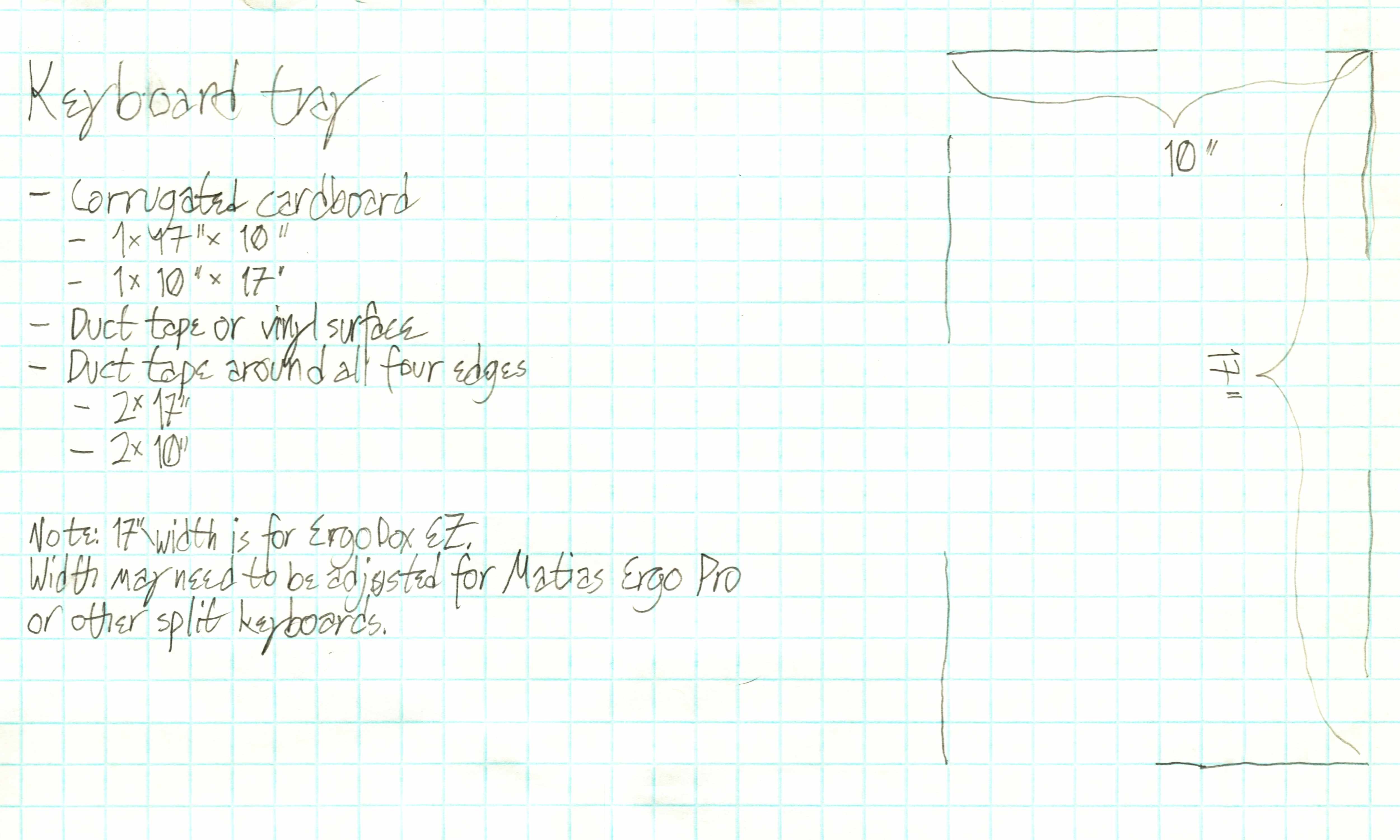A thin but rigid keyboard tray for a split keyboard
I recently switched from one-piece keyboards to two-piece keyboards—first the Matias Ergo Pro, and then the ErgoDox EZ. These keyboards enable me to separate the halves and set them at an angle to each other so my wrists don’t end up bent as I try to bring my hands in to meet the keyboard.
I’ve been using these keyboards on my lap, rather than on any kind of desk. (I’m way more comfortable seated in a relaxed posture than seated upright, but a recumbent posture puts me too far away from any desk I’ve ever encountered.)
With a single-piece keyboard, I can just lay the keyboard across my lap—the best keyboards for this are 60% to 80% keyboards, such as the Mini M; full-size keyboards (what used to be called “extended” keyboards) end up with the keypad hanging off to my right.
With a two-piece keyboard, this doesn’t work. Each half doesn’t have a flat bottom; they typically have three separate feet, particularly in the tented configuration that I’ve come to favor, where the inner side of each half is raised several centimeters, while the outer side remains more or less on the desk surface (or equivalent).
So I need a keyboard tray to be able to use a split keyboard in my lap.
In the setup I have in HB, I use a commercial lap desk with cushions underneath it and this works great. I bought a second one to bring to SF… but my setup here is different, with me sitting on my couch rather than in a gaming chair. The cushions raise the keyboard up too high in this configuration. I needed something thinner.
Fortunately, I already had a rigid work surface that I had made for painting my nails. Unfortunately, that work surface has a crease in it that doesn’t cause a problem when I’m painting my nails, but does cause a problem with supporting one of the halves of the keyboard. The ErgoDox’s feet also slipped a little on the bare cardboard, and the size wasn’t quite right.
So I made a new one—poetically enough, from the box that the commercial lap desk came in. This one is 17 by 10 inches, and has white duct tape across the upper surface and sealing all four edges.
The structure is simply two sheets of corrugated cardboard, with the corrugations of one sheet perpendicular to those of the other. One sheet is 17 by 10, while the other is 10 by 17. With one rotated 90 degrees and the two taped together into one unit, it becomes a very lightweight but rigid platform, not flexible in either axis because the corrugations along that axis prevent it.
As I noted in the diagram, 17 inches is a width that works for the ErgoDox (and my separation distance), but might not work for the wider Matias Ergo Pro. The remedy for that is simple: Use wider/longer cardboard.

